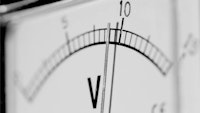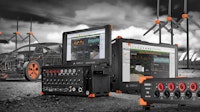Table of contents
Browse categories
Browse authors
 AB
ABAlberto Boffi
 AL
ALAlessia Longo
 AH
AHAl Hoge
 AB
ABAljaž Blažun
 BJ
BJBernard Jerman
 BČ
BČBojan Čontala
 CF
CFCarsten Frederiksen
 CS
CSCarsten Stjernfelt
 DC
DCDaniel Colmenares
 DF
DFDino Florjančič
 EB
EBEmanuele Burgognoni
 EK
EKEva Kalšek
 FB
FBFranck Beranger
 GR
GRGabriele Ribichini
Glacier Chen
 GS
GSGrant Maloy Smith
 HB
HBHelmut Behmüller
 IB
IBIza Burnik
 JO
JOJaka Ogorevc
 JR
JRJake Rosenthal
 JS
JSJernej Sirk
 JM
JMJohn Miller
 KM
KMKarla Yera Morales
 KD
KDKayla Day
 KS
KSKonrad Schweiger
Leslie Wang
 LS
LSLoïc Siret
 LJ
LJLuka Jerman
 MB
MBMarco Behmer
 MR
MRMarco Ribichini
 ML
MLMatic Lebar
 MS
MSMatjaž Strniša
 ME
MEMatthew Engquist
 ME
MEMichael Elmerick
 NP
NPNicolas Phan
 OM
OMOwen Maginity
 PF
PFPatrick Fu
 PR
PRPrimož Rome
 RM
RMRok Mesar
 RS
RSRupert Schwarz
 SA
SASamuele Ardizio
 SK
SKSimon Kodrič
 SG
SGSøren Linnet Gjelstrup
 TH
THThorsten Hartleb
 TV
TVTirin Varghese
 UK
UKUrban Kuhar
Valentino Pagliara
 VS
VSVid Selič
 WK
WKWill Kooiker
High-Voltage Switch Testing With Synchronizer

Circuit breakers are an important and critical component of power delivery systems. They prevent damage to the system’s components and wiring when the current in the electrical circuit supersedes design limits. The Italian transmission system operator Terna S.p.A. wanted to check the switching function of an old synchronous high-voltage circuit breaker. Dewesoft data acquisition systems and Power Analysis software did the job.

Terna S.p.A. is a transmission system operator (TSO) based in Rome, Italy. It operates through Terna Rete Italia, which manages the Italian high-voltage transmission grid. A network of 74,669 Km of lines with 888 electrical substations, and 4 control centers managing 320 billion kWh annually.
The synchronizer
Circuit breakers are mechanical switching devices capable of making, carrying, and breaking our grid current in normal and abnormal conditions. During abnormal conditions such as when lightning strikes a transmission tower, circuit breakers isolate the faulty components of the system to prevent additional damage. Ideally, in closed conditions, a circuit breaker should function as a perfect conductor to ensure optimal current flow.
A synchronizer is widely used in high voltage (HV) circuit breakers to avoid the contact is opened or closed when the current flow is high. Opening a high current flow would lead to electric arcs and reduce contact lifetime.
The synchronizer, knowing the actuator delays, observes the sinewave timing and gives a command to the breaker in a magic instant, calculated in order to have a null instantaneous current when the contact moves.
The same actuation is performed on all three phases, with different timing since the three sine waves are shifted by 120 degrees.
A brand-new installer is calibrated to work perfectly and preserve contacts during operations, but unfortunately, during years it happens that contact opening/closing time varies and results in actuation at the wrong time.
Purpose of the test
The purpose of this functional test was to analyze an older synchronous HV circuit breaker to check for possible deviations from the initial setup.
The measurement equipment used
Dewesoft SIRIUS signal conditioning and acquisition module, model SIRIUSi-HS 4xHV, 4xLV
Three Dewesoft AC current clamps type model DS-CLAMP-15AC
DewesoftX Power Analysis module
The module integrates signal conditioning functions, such as AC or DC coupling selection, programmable gains, offset compensation (deriving from transducers), programmable LP filters, excitation of current probes, and much more, including self-recognition of the probes current and sensitivity to use.
Among the various features, the galvanic isolation at 1600V channel to channel and channel to the ground (GND) is noteworthy.
Connecting the instrument to the system
The three voltages were connected on the secondaries of the voltage transformers with a conversion ratio of 1:3800, while the three currents were intercepted downstream of the CTs with a conversion ratio of 1:800.
The two command signals (opening and closing) sent by the synchronizer to the switch were also connected, signals at 110Vdc.
Carrying out the test
A typical circuit breaker closure test can be divided into three distinct moments: the energization of the HV busbars, the closing of the no-load circuit breaker, and delivery on load.
Energization of the HV busbars
The energization of the high-voltage bars is measured by a sequence of high-frequency discharges with time history.
Closing the switch
Analysis of closing times
The execution of the switch closure test shows the command signal that rises to 117V at a certain instant.
From the trend of the current signals, we are able to measure the activation delay equal to 163ms.
The detail of the current signals in the instant of closure highlights a very nervous trend, probably due to the triggering of discharges with current peaks up to 900A.
The absence of a load downstream of the switch is probably the cause of the important distortions of the current signals following closure.
Behavior analysis of the synchronizer
A detailed analysis of the switch-switching instant highlights that the closure of the three phases does not occur at regular intervals and in incorrect instants.
The analysis shows that phase 12 (red) is closed when the instantaneous voltage V12 is about 24 kV, followed by phase 4 (after 4.33ms) when the instantaneous voltage V4 is about 234 kV, and finally, phase 8 (after 1,89ms) when the instantaneous voltage V8 is -250 kV.
This behavior causes electric arcs, clearly shown as peaks on the current graph above.
Return on load
Phasor analysis
A phasor analysis highlights the mismatches and imbalances in the three phases.
The following figure shows the trend of the first harmonic voltages and currents (h = 1, f = 50.011Hz) with the switch closed and without load.
Harmonics analysis
While a harmonic analysis highlights the presence of important distortions, which contributed to the achievement of PF 0.534
Other
Many other parameters are calculated by the DewesoftX Power Module, the standard, customizable power analysis screen is shown below.
Conclusion
Following the tests carried out, it is clear that the synchronizer under test is not working correctly; the closing of the contacts does not take place at the right moment causing important discharges with currents up to 900A.
Furthermore, the closure of the three contacts does not occur at regular intervals, the closing interval between phases 12 and 4 is 4.33ms while between phases 4 and 8 the interval is 1.89ms, a clear symptom of malfunction in case of steady-state periodic three-phase.
The analysis of phenomena with Dewesoft data acquisition systems allows easy verification of operation correctness. It is possible to automate this verification with integrated sequences in DewesoftX that guide the operator in the field who does not necessarily have to be competent in the technology used.
Regular synchronizer verification is easy and enough to identify those with aging problems that require some maintenance to come back to normal operation. Correctly working synchronizers are important to preserve the expensive contacts of HV circuit breakers.
References



